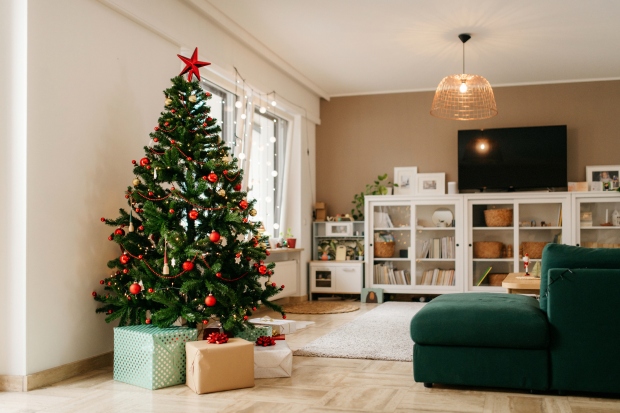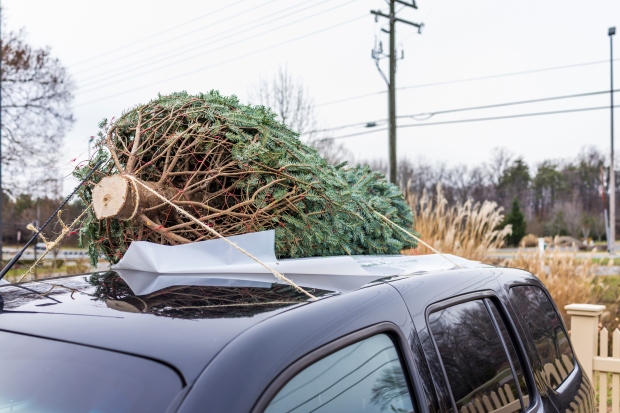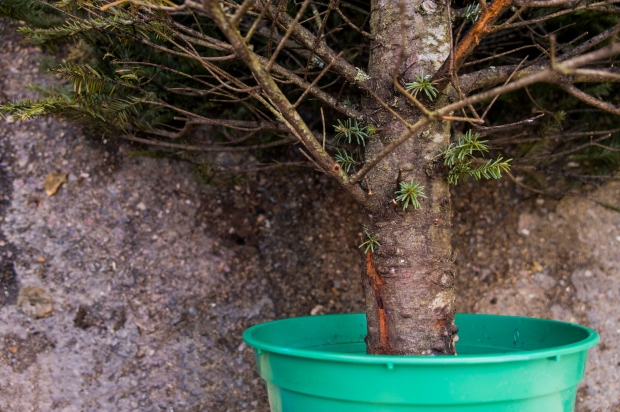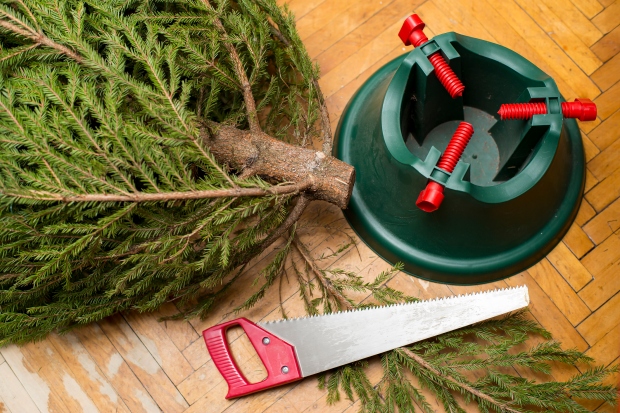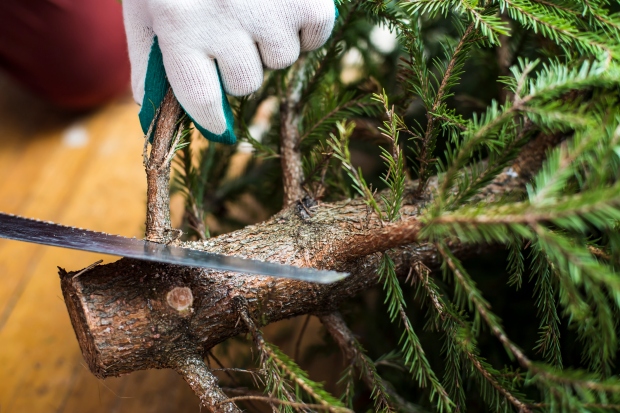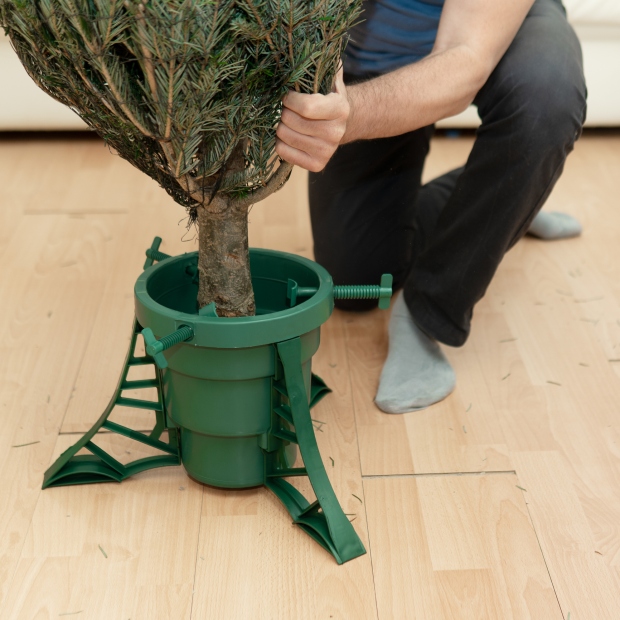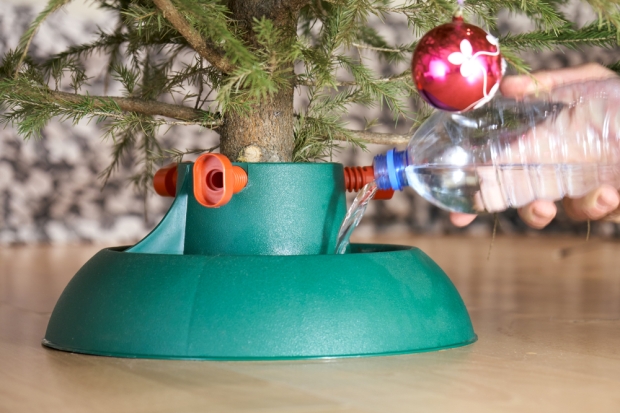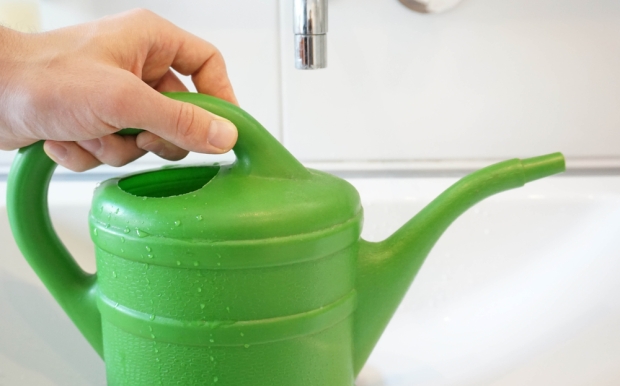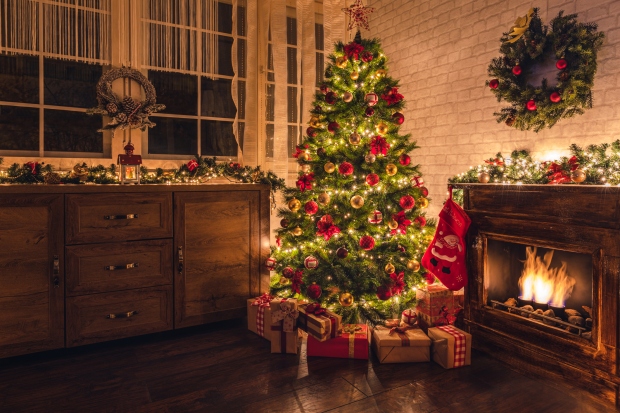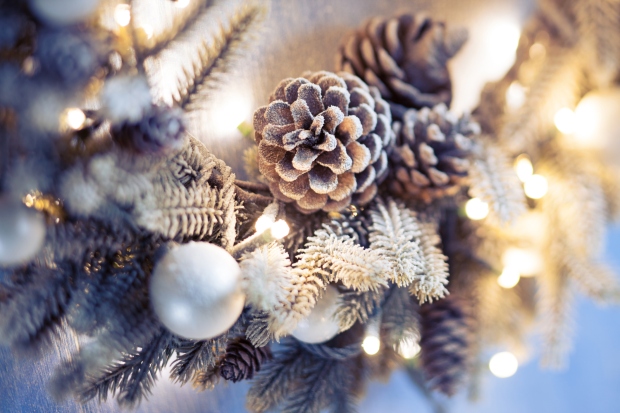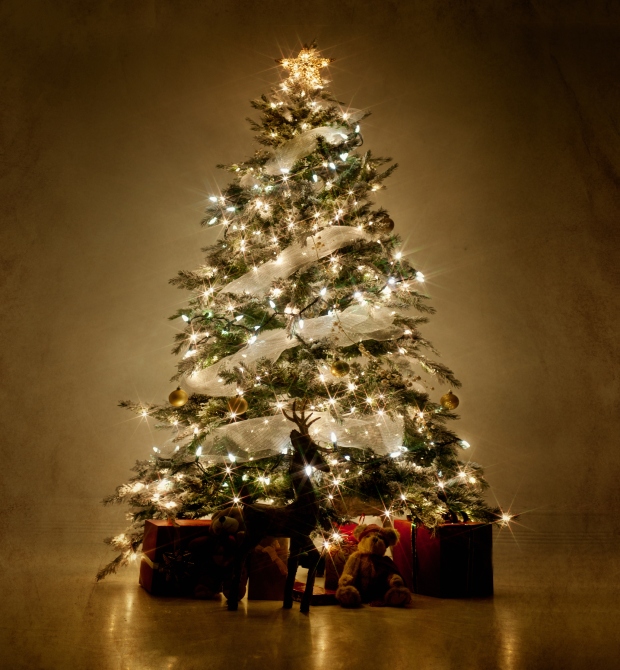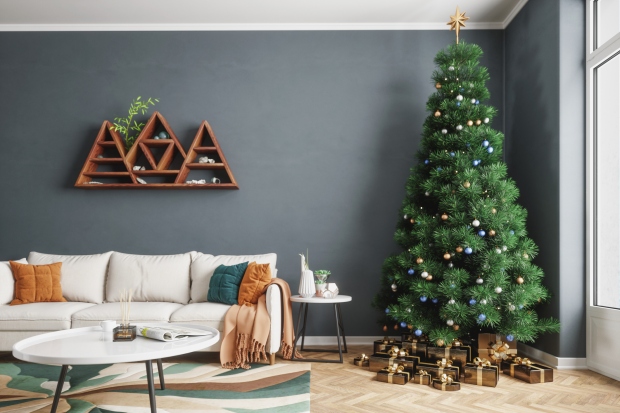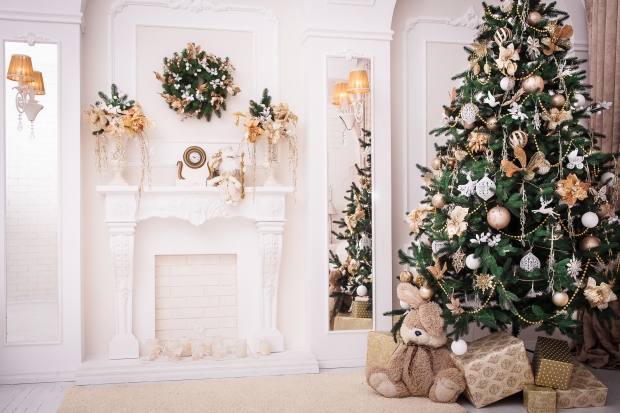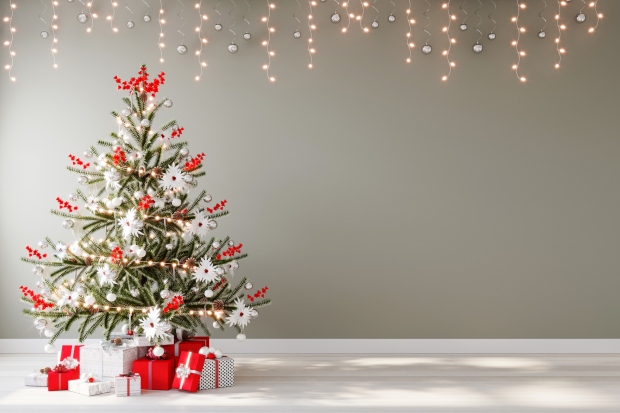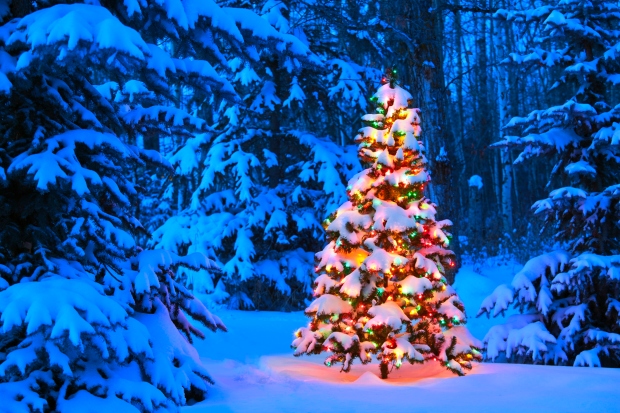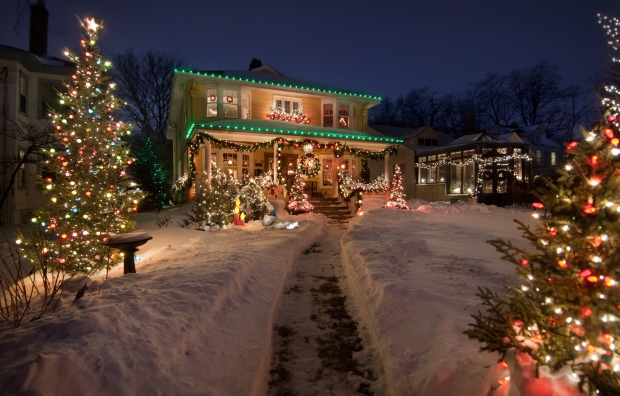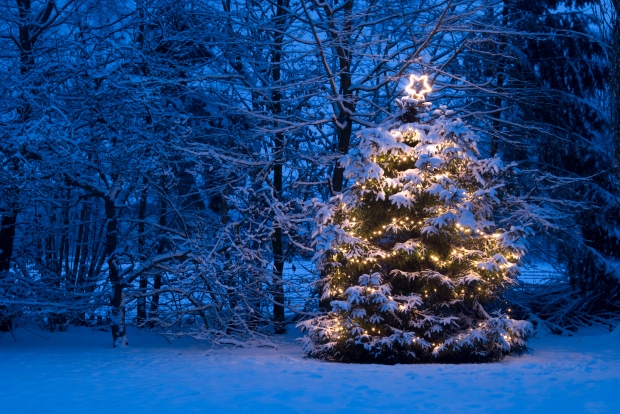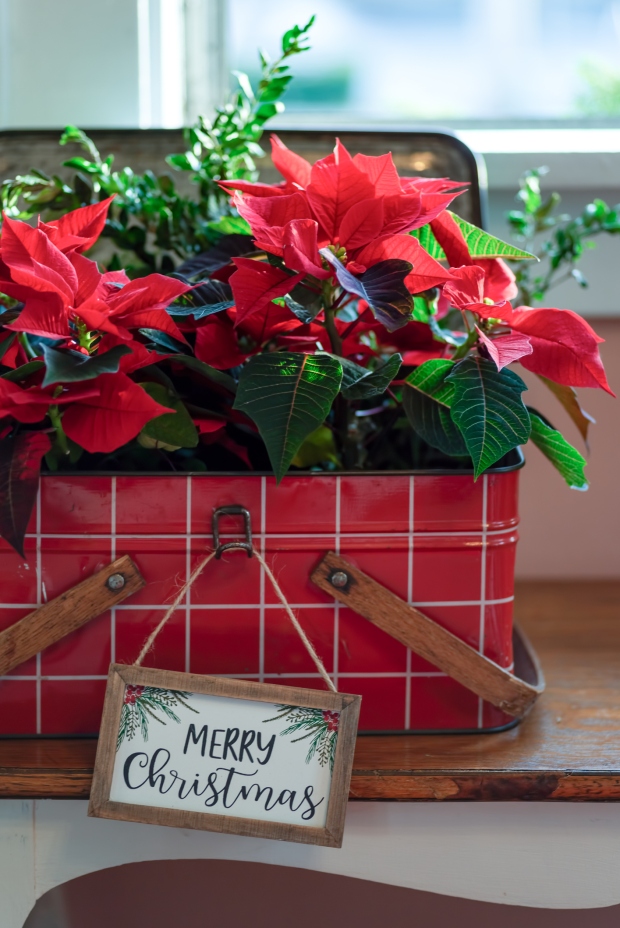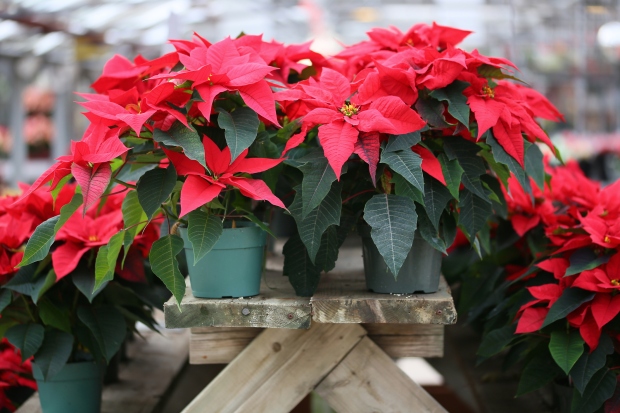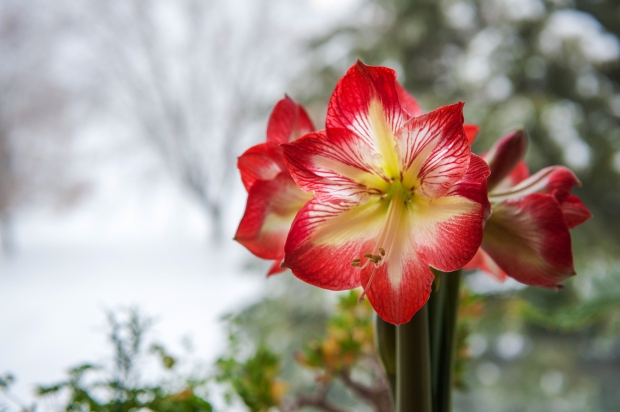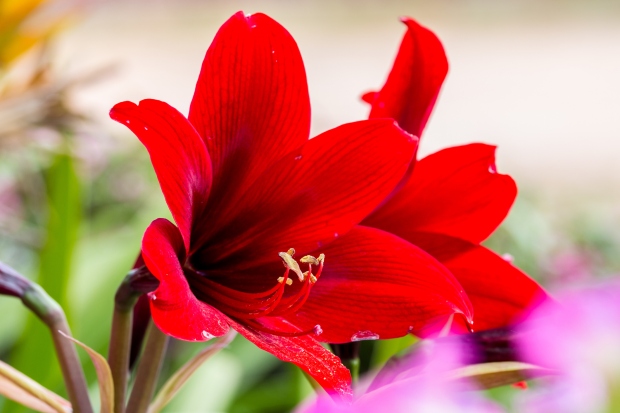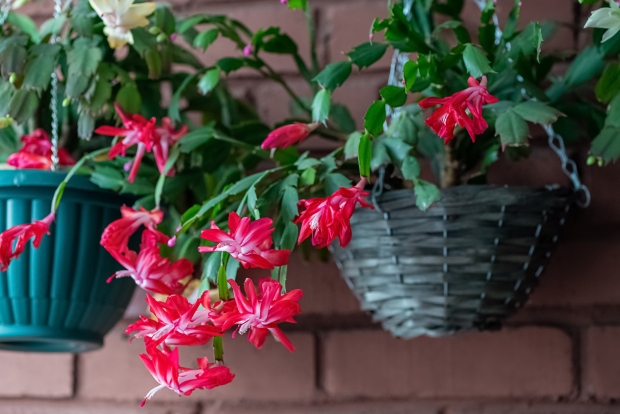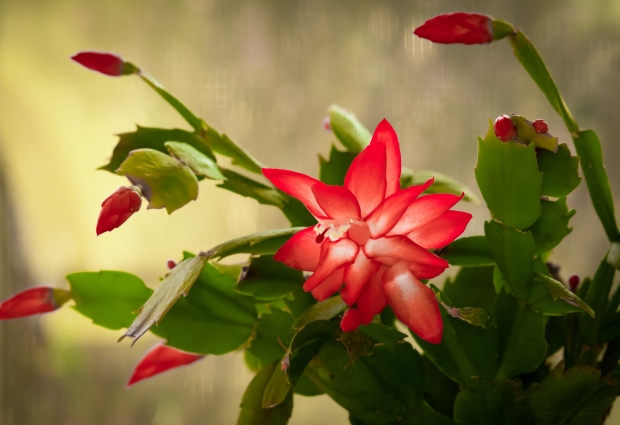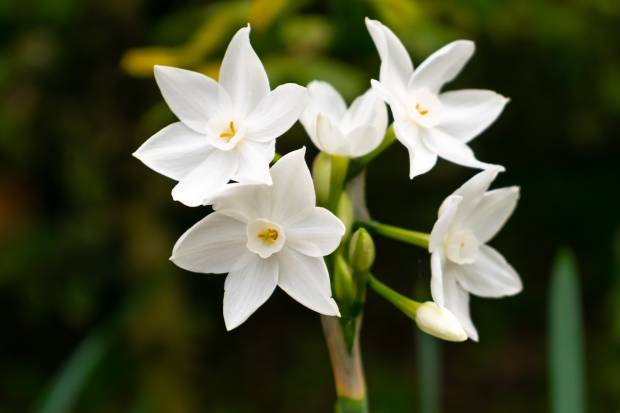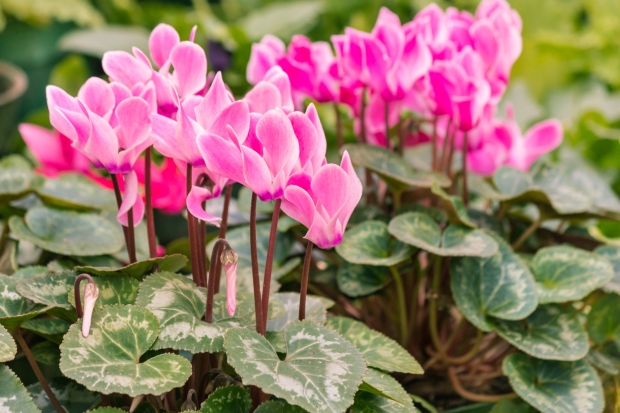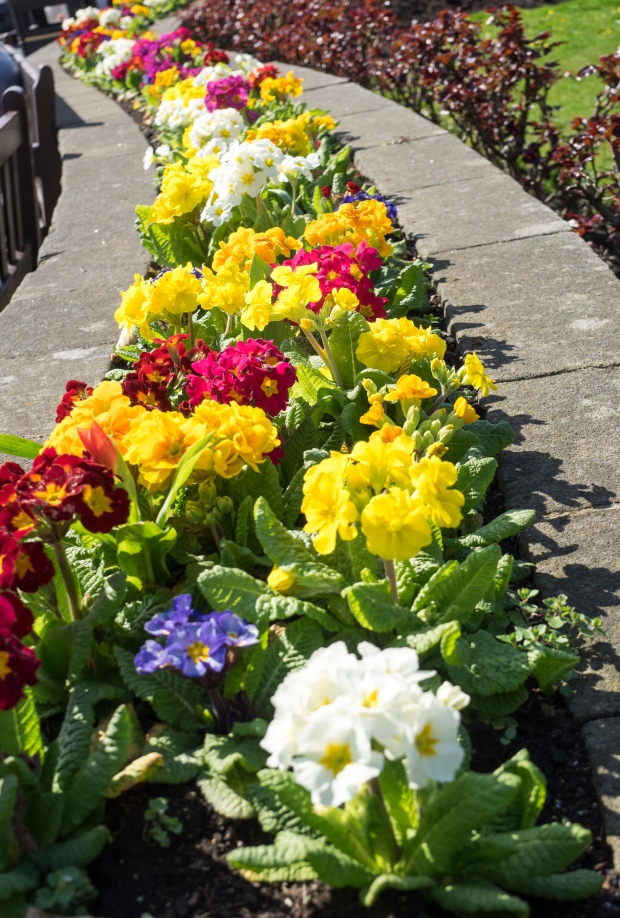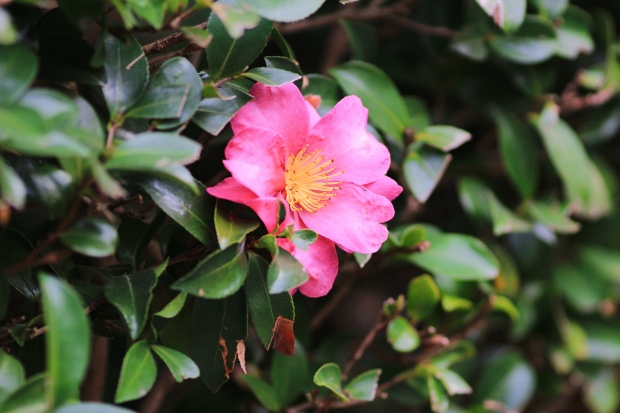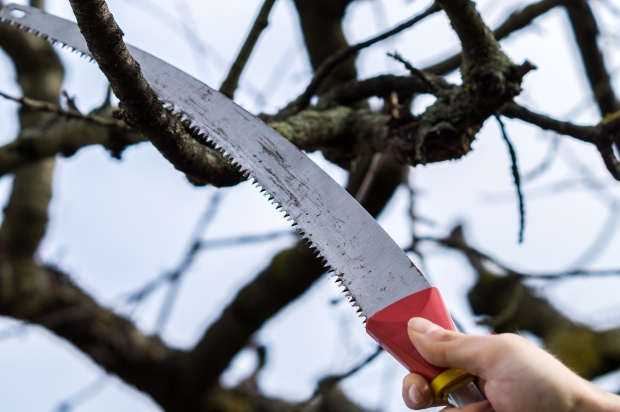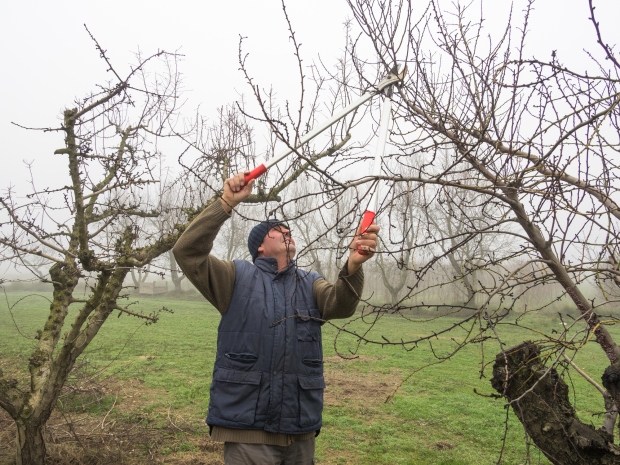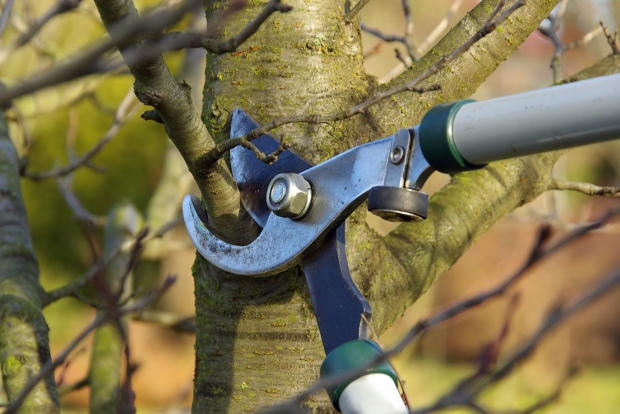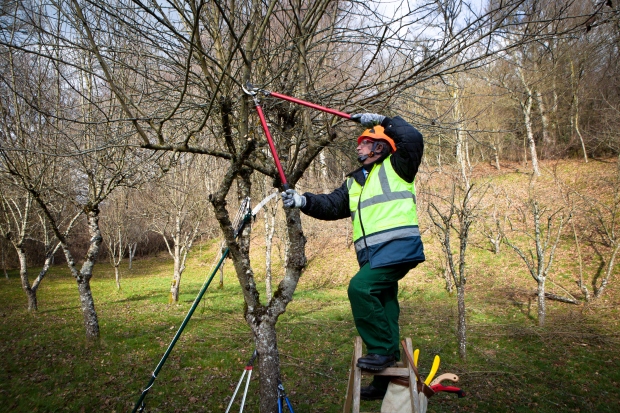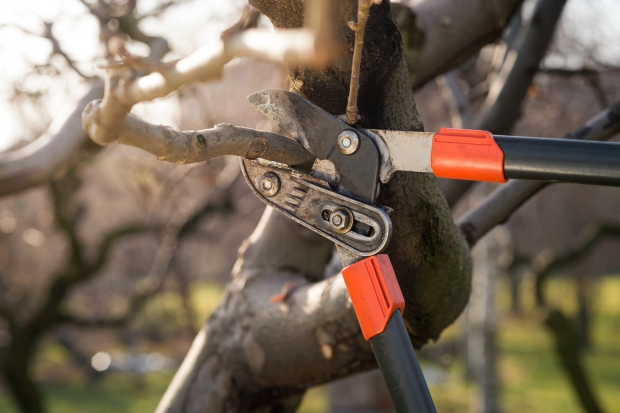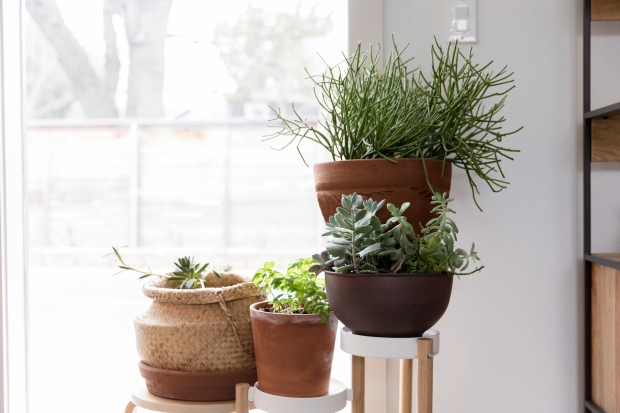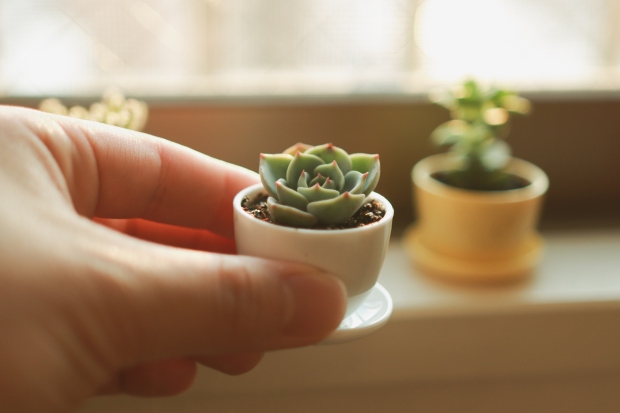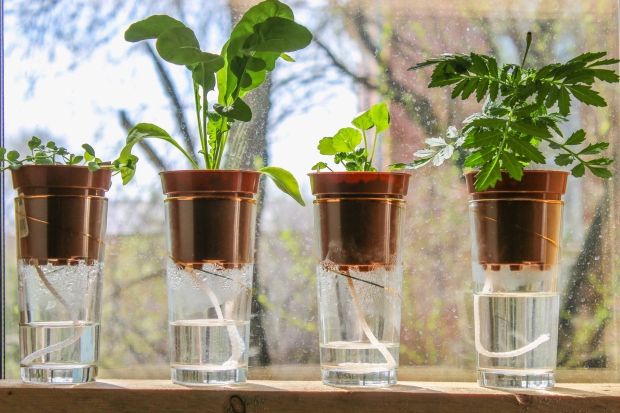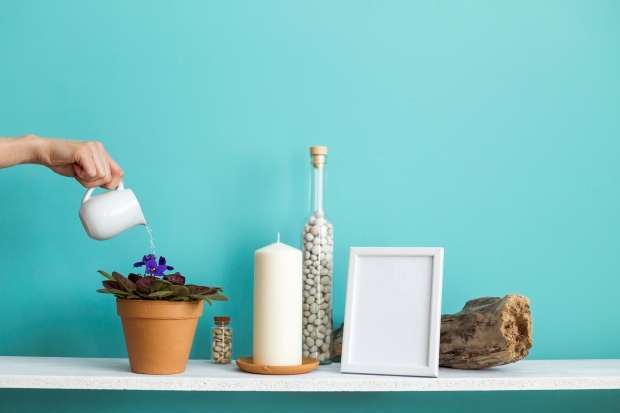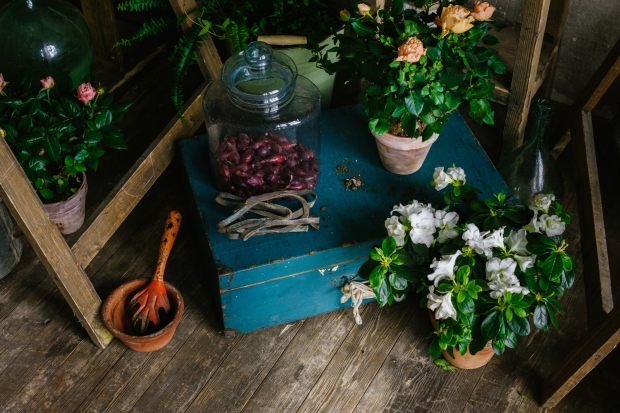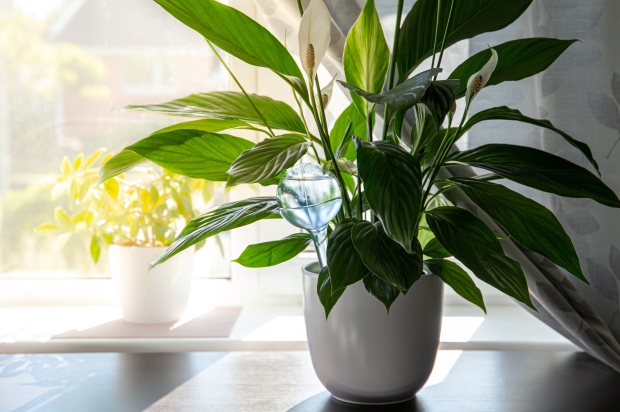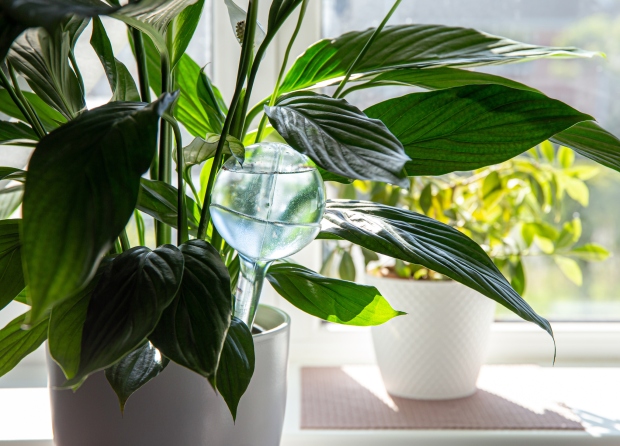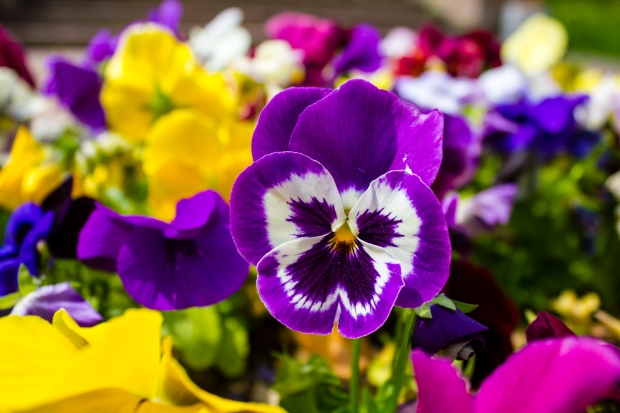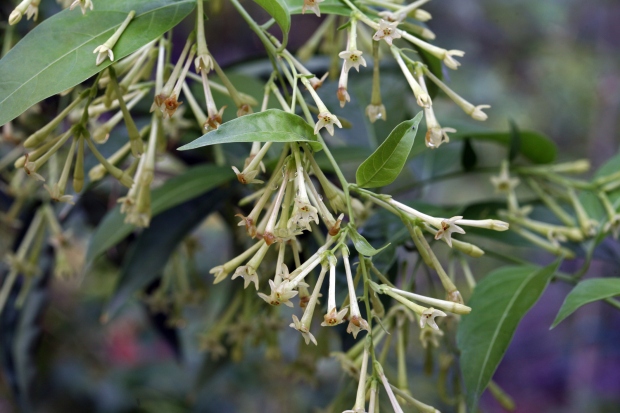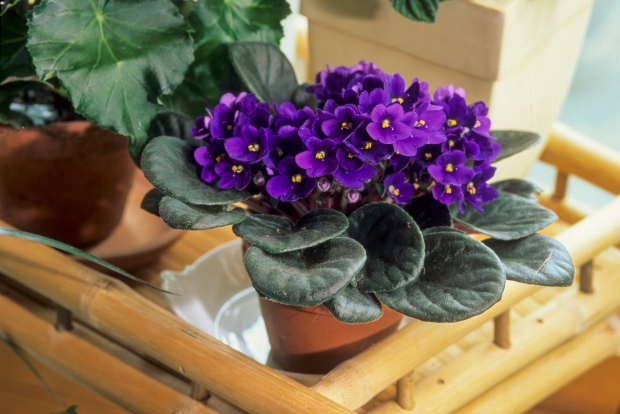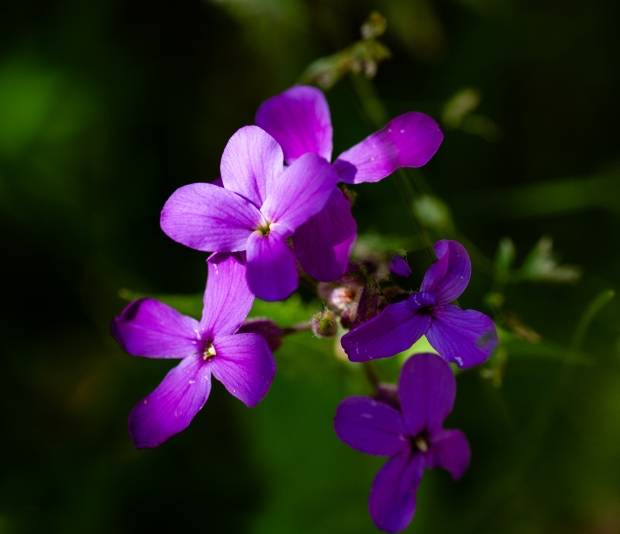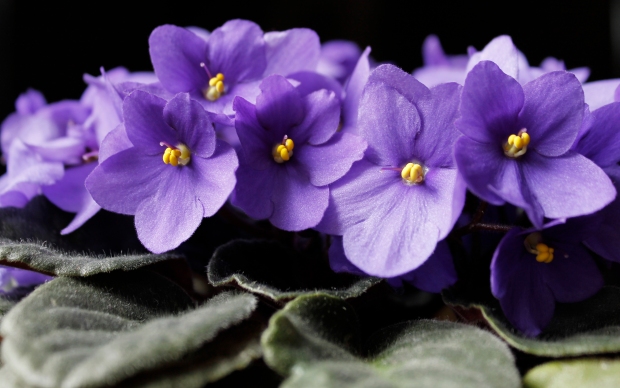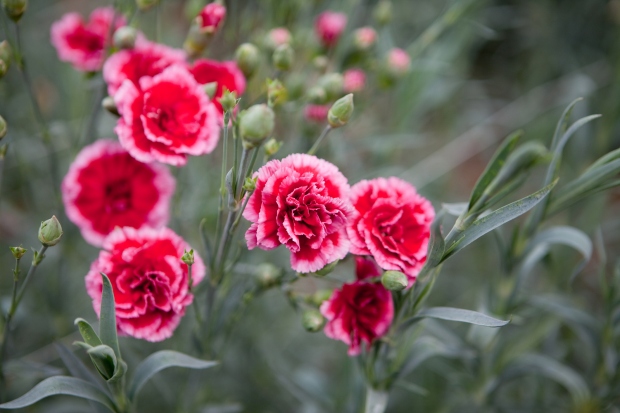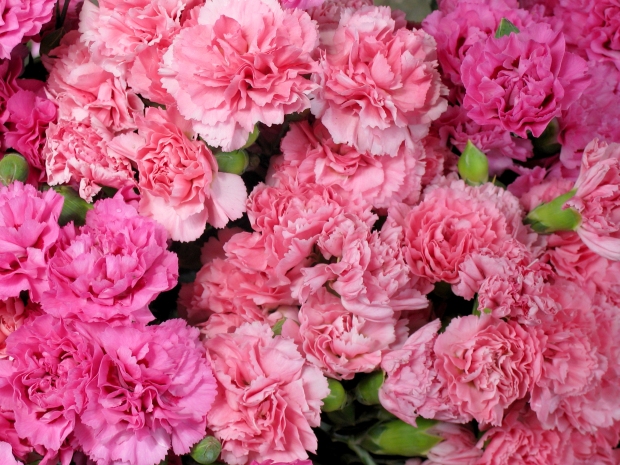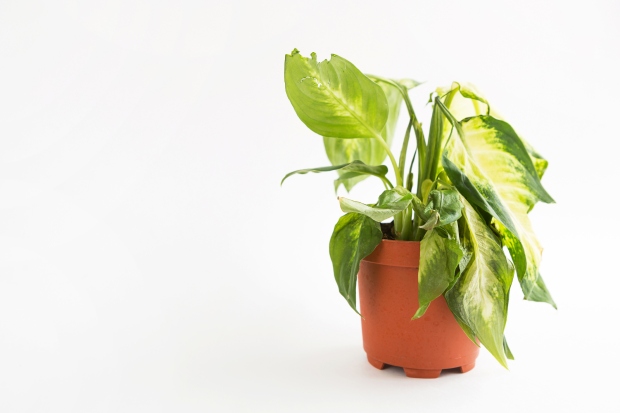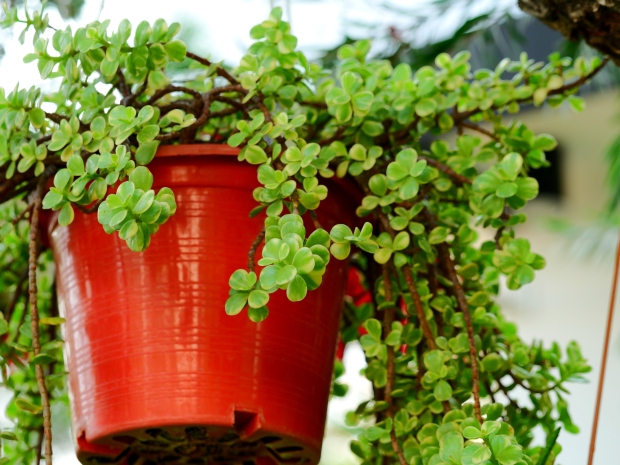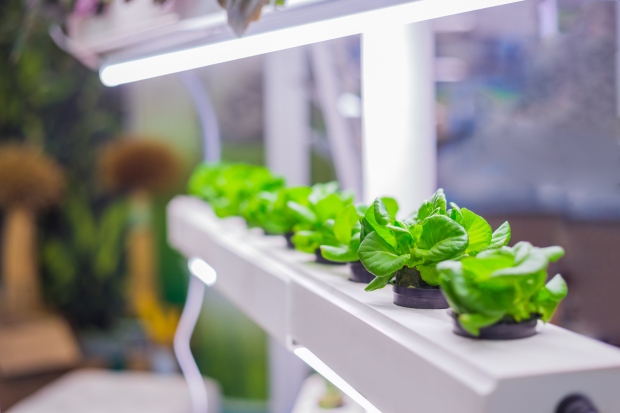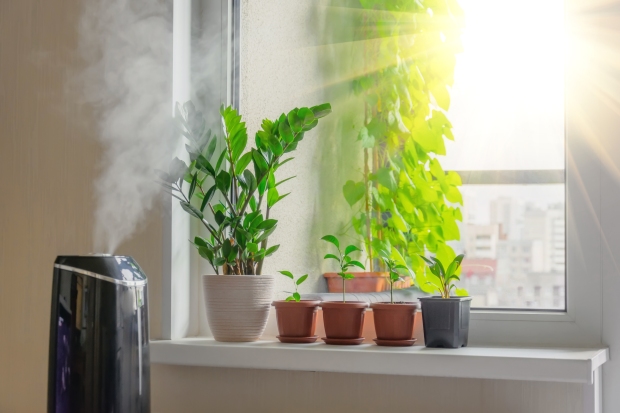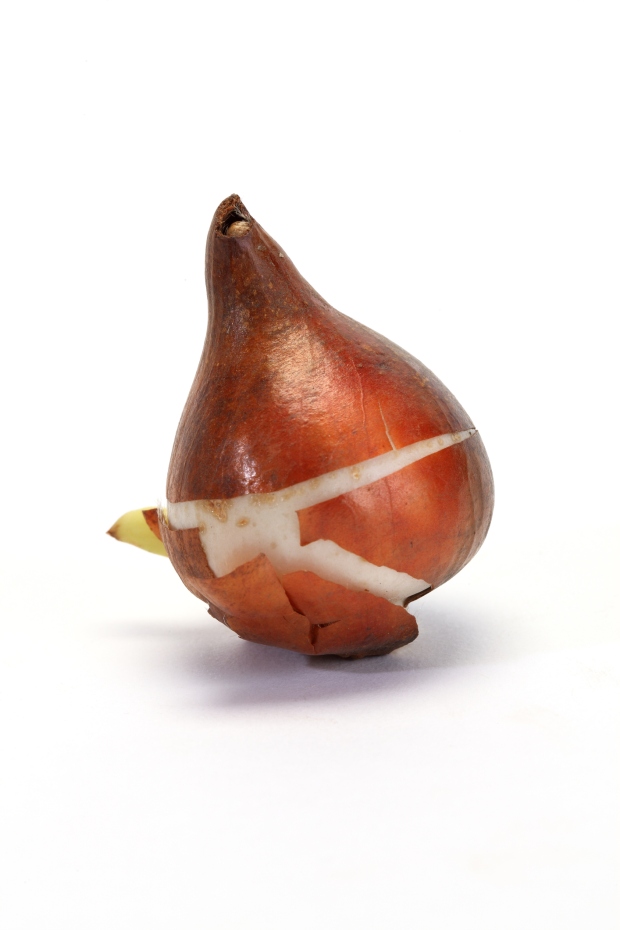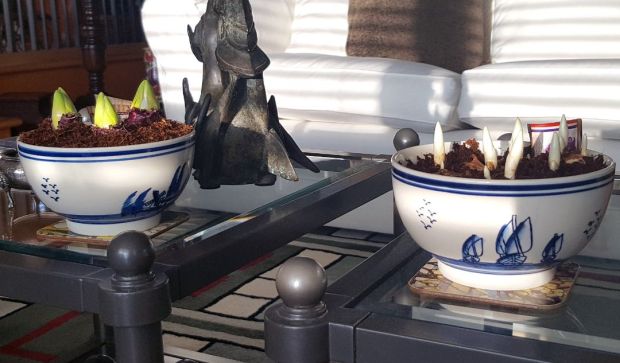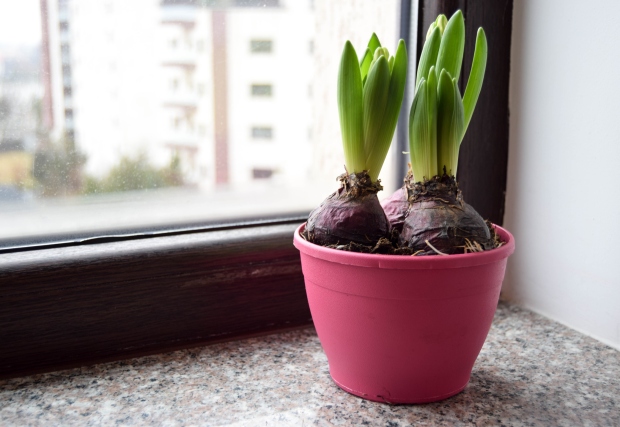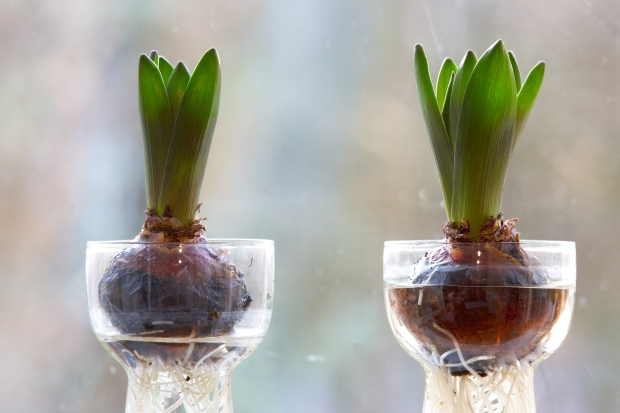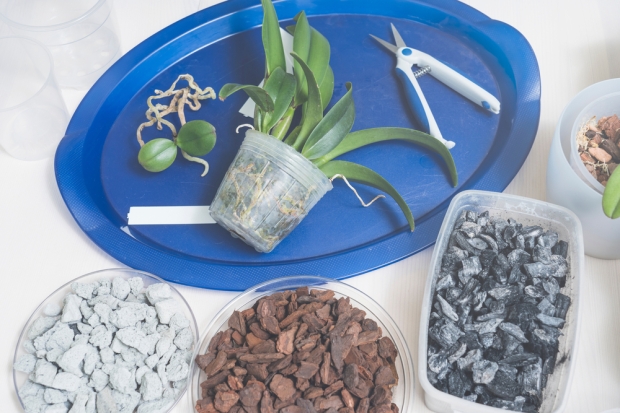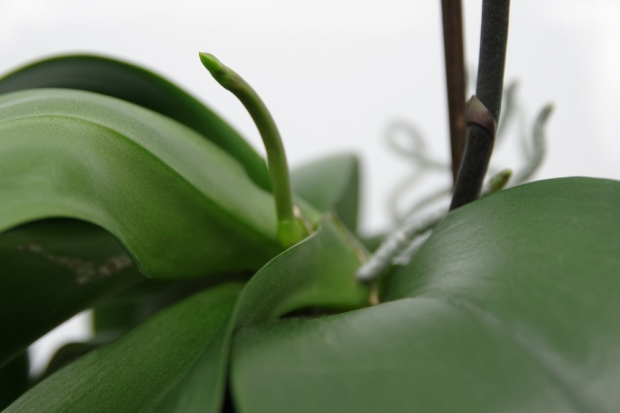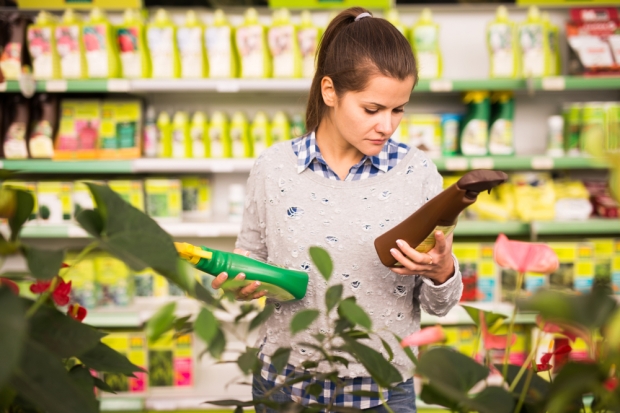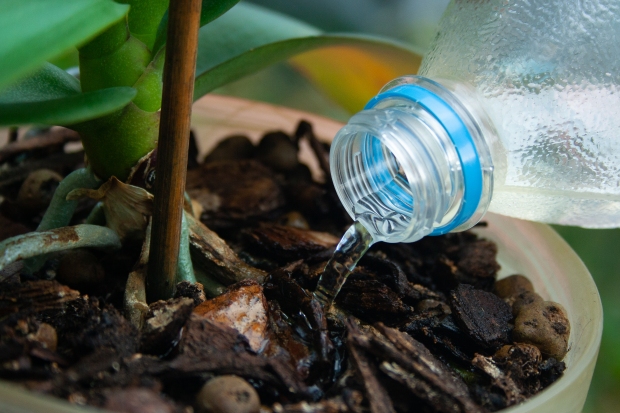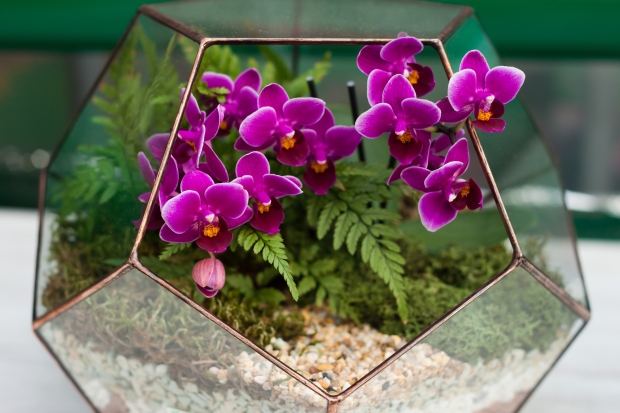How to Maintain Your Garden Tools: Cleaning, Sharpening, and Oiling
Maintaining your gardening tools is an essential task that extends their lifespan and makes your gardening tasks much easier. This article will teach you all you need to know about properly cleaning, sharpening, and oiling your gardening tools.
Cleaning, sharpening, and oiling gardening tools are essential tasks that all gardeners must undertake. Maintaining your garden tools properly means that they’re going to last longer and work effectively every time.
This article will teach you all you need to know about maintaining your tools, including what materials are needed as well as step-by-step guides to cleaning, sharpening, and oiling them.

Cleaning Your Garden Tools
Cleaning your tools regularly will not only help your tools last longer but will also benefit your plants. Cleaning is crucial to disinfect your tools so that you’re not spreading bacteria and fungal diseases from diseased plants to healthy ones. A single contaminated tool can cause problems for your entire garden.
Read on to find out how often you should clean your tools as well as how to clean them properly.

How Often You Should Clean Your Tools
Ideally, you should clean your tools after every use to keep them in tip-top shape. However, for most people, that’s just not practical. Therefore, try to set aside some time once every few months or so to give all your tools a really good clean.
Of course, this depends on how often you’re using your tools. Those used more frequently like secateurs and gardening trowels should be cleaned once a month if you’re out gardening every other day. Less used tools can be left for a few months before you give them a thorough clean.
The only exception to this is if you’re using any of your tools to prune away diseased foliage. If this is the case, you should disinfect those tools immediately after use to remove any bacteria or fungal spores.
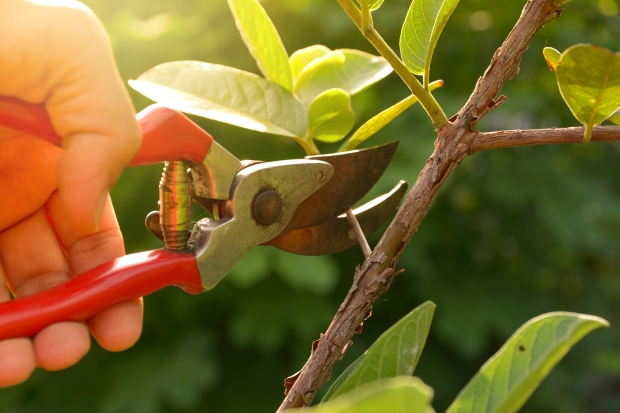
How To Clean Your Gardening Tools
Here’s a selection of materials you’re going to need to give your tools a good clean.
- Garden hose
- Some old towels or rags
- Dishwashing detergent
- Sponge
- Isopropyl alcohol or similar disinfectant
- Steel wool
- Sandpaper (80 to 120 grit is best)
- Scrubbing brush
- Wire brush
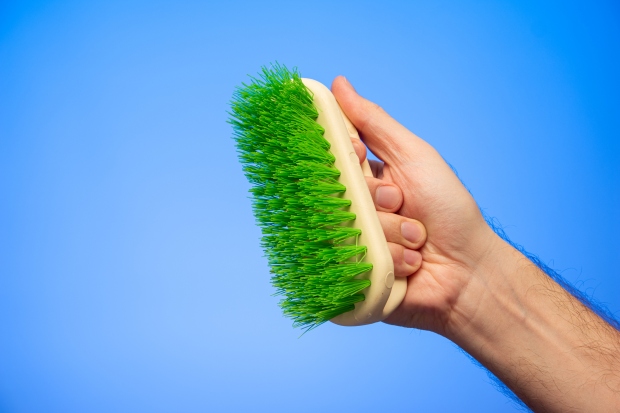
Once you’ve gathered all the materials, follow the below steps to clean your tools thoroughly.
- Wash away any dirt and grime from your tools with the garden hose.
- Grab the household scrubbing brush and some detergent and scrub away any sap and dirt from the blades of your tools.
- Use the garden hose to rinse off the detergent and then dry the tools thoroughly.
- Use either sandpaper or steel wool to remove any tough stains or rust spots that remain.
- Dilute the disinfectant that you're using in a container of water and soak your tools for around 5 minutes, making sure that the blades are fully immersed.
- Take the tools out of the disinfectant and rinse once again with the garden hose.
- Wipe the tools completely dry using an old towel or rag.

Sharpening And Oiling Your Garden Tools
Once your tools are completely clean, it’s time to sharpen those that need it. For this, you’re going to need:
- Coarse metal file
- Fine metal file
- Angle grinder, bench grinder, or grindstone
- Some oil for lubrication
The method for sharpening your tools will depend on the type of tool you want to sharpen. Therefore, the method for each group of tools will be discussed separately.
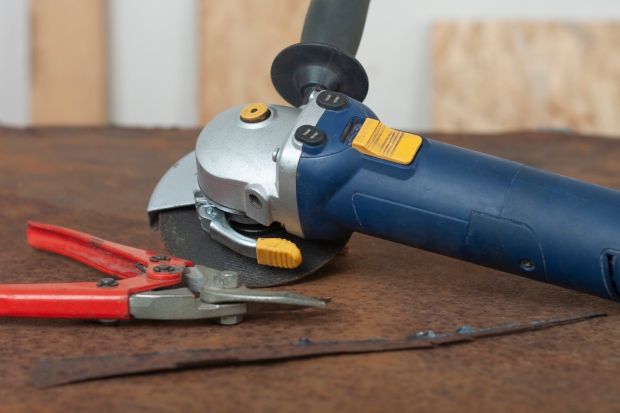
To Sharpen Pruning Tools With Cutting Blades
- Use a coarse diamond file to file the edge of each blade until you expose the clean metal. Make sure that you only file in one direction.
- You should start at the inside of the blade and work the file toward the blade's edge with a curved motion.
- Next, use the fine diamond file and go over the beveled edge and the back of the blade.
- Finally, coat the blades lightly with oil.

To Sharpen Lawnmower Blades
Before you remove the blade from your lawnmower, make sure that you disconnect the spark plug. Then, follow these steps:
- Hold the blade firmly by putting it in a vice on your workbench.
- Using the metal file, sharpen the edge of each blade in the same way that you sharpened the blades on your cutting tools. You only need to sharpen until the blade is as sharp as a butter knife. If you make the blades too sharp, they're going to go blunt too quickly.
- Coat the blade with a fine layer of oil as the final step before replacing it on the mower.
Note: You can also use a bench grinder for this job but make sure that you don’t overheat heat the blade because this can make it warp.
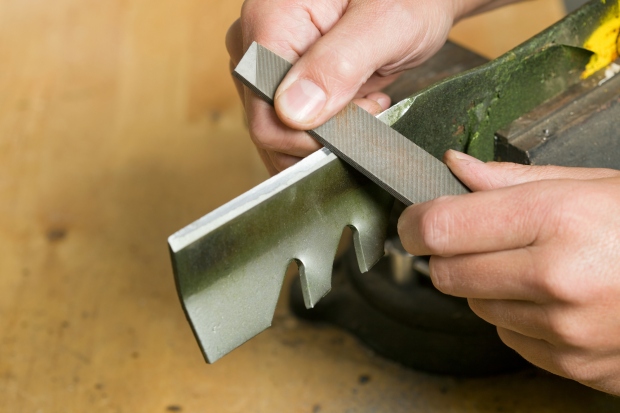
To Sharpen The Edges On Your Spades, Shovels, and Trowel
Your digging tools will work much more efficiently if their edges are lightly sharpened. Here’s what to do:
- Hold each tool securely in a vice on your workbench.
- Make sure that you only work on the inside edge of each tool. Using your metal file, work singular strokes from the inside out at a 45-degree angle. Continue to file until you see the shiny edge appear.
- Coat the edge of each tool lightly with oil.
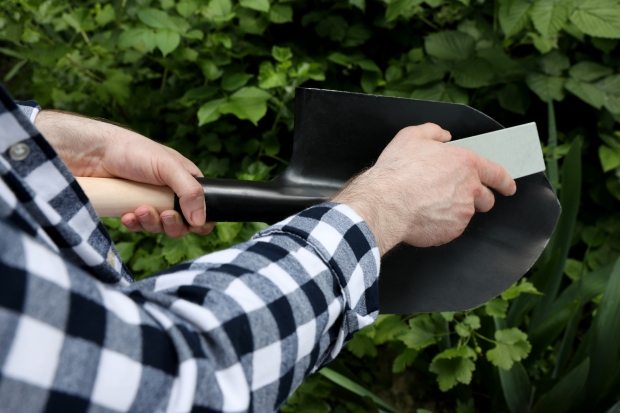
To Sharpen The Tines On Your Rake
The tines or prongs on your rake can also benefit from an occasional sharpening to make them more effective. Use the same method that you used for sharpening your digging tools. However, this time you need to work on each individual tine. You might need to use a small round file for this.
Ultimately, you want to achieve a decent point at the end of each tine. Once you’ve finished sharpening, coat the tines lightly with the lubricant oil.

How To Protect Your Tools From Rust
Unfortunately, cleaning and sharpening your tools won’t necessarily protect them from rust. However, there are a few things you can do to prevent rust and further extend the lifespan of your garden tools.
- Remove dirt and sap from your tools after every use.
- Always dry your tools thoroughly after you've washed or rinsed them.
- Oil your tools regularly using either cooking oil, linseed oil, tung oil, or olive oil. This not only stops the tools from rusting but also helps the dirt slide off more easily.
If you follow these tips to clean and sharpen your garden tools regularly, they are sure to last for many years.
